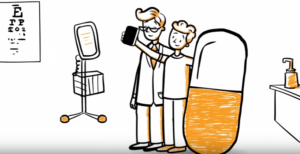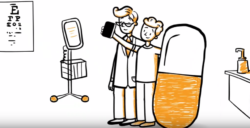It is the beginning of autumn in the Northern Hemisphere. What better way to get ready for the winter than preparing to fend off all the viruses that come with it? Today’s case study is about one of Israel’s largest HMO’s (Health Maintenance Organization) and its struggle to reduce the use of antibiotics among its virus-stricken patients. The use of inventive solutions like SIT’s multiplication tool allowed the HMO to overcome this issue.
Read more to see how Israel’s largest HMO used inventive solutions and problem-solving techniques:

In the years leading up to 2001, the statistics showed a consistent annual increase in both the prescription and use of antibiotics among children. Today, it is common knowledge that overuse of antibiotics is one of healthcare’s biggest concerns. Back then, only healthcare professionals were aware of the danger of the evolution of “supergerms” with resistance to antibiotics. This, together with the financial impact that heavy antibiotic consumption had on the insurers (i.e. HMO’s) who subsidize the drug’s purchase, incentivized the HMO to find a solution.
Prescribing for the wrong reasons
Funnily enough, the biggest contributors to the problem were the HMO’s own General Practitioners, who obviously knew better. It was found that they were over-prescribing antibiotics to their patients not because they felt that it was the correct treatment, but because the HMO was – in part – evaluating them according to customer (i.e., patient, or in this case, patient’s parents) satisfaction. Not surprisingly, parents with children who did not feel well had their own motivations to get an antibiotics prescription. Parents wanted to give their children some type of medication to feel they were contributing to end their child’s suffering and… they needed to get back to work ASAP.
No silver-bullet solution
SIT was invited by the HMO to help generate solutions to this problem. After applying the Systematic Inventive Thinking method during multiple sessions over several days, it became apparent that there wouldn’t be a silver-bullet solution, but a collection of inventive solutions addressing different aspects of the problem. However, at the forefront remained the paradox of the doctors’ dilemma: wanting to satisfy their patients while giving the most appropriate clinical solution. In other words, the HMO was looking to remove the connection between the patient’s request for antibiotics and the doctor’s decision regarding the right treatment.
One of the most inventive solutions generated was a result of SIT’s Multiplication tool: Add to the problem world something that is similar to what already exists there.
Two for one – Inventive Solutions!
The idea was that the doctor would give the parent two prescriptions. One was effective immediately, prescribing medications that reduce the severity of the symptoms – nose drops, lozenges, etc. The second, effective 48 hours later, was the prescription for antibiotics. It was anticipated that if the symptoms would be gone by then (as is the case with most viruses), the parent would simply not fill this second prescription. [Note that in 2001, the OTC market in Israel was close to non-existent. Therefore, even symptomatic medicines were dispensed only by a pharmacist, even though no prescription was needed.]
This solution, together with an ad campaign against antibiotic overuse, and other solutions involving education for parents and doctors, generated an impressive decrease of 33% in antibiotic consumption over the following two years!
A very healthy, virus-free and bacteria-free autumn to you all!
Keep learning how to apply SIT’s methodology in our post about how to optimize and make your idea a sweet idea.
